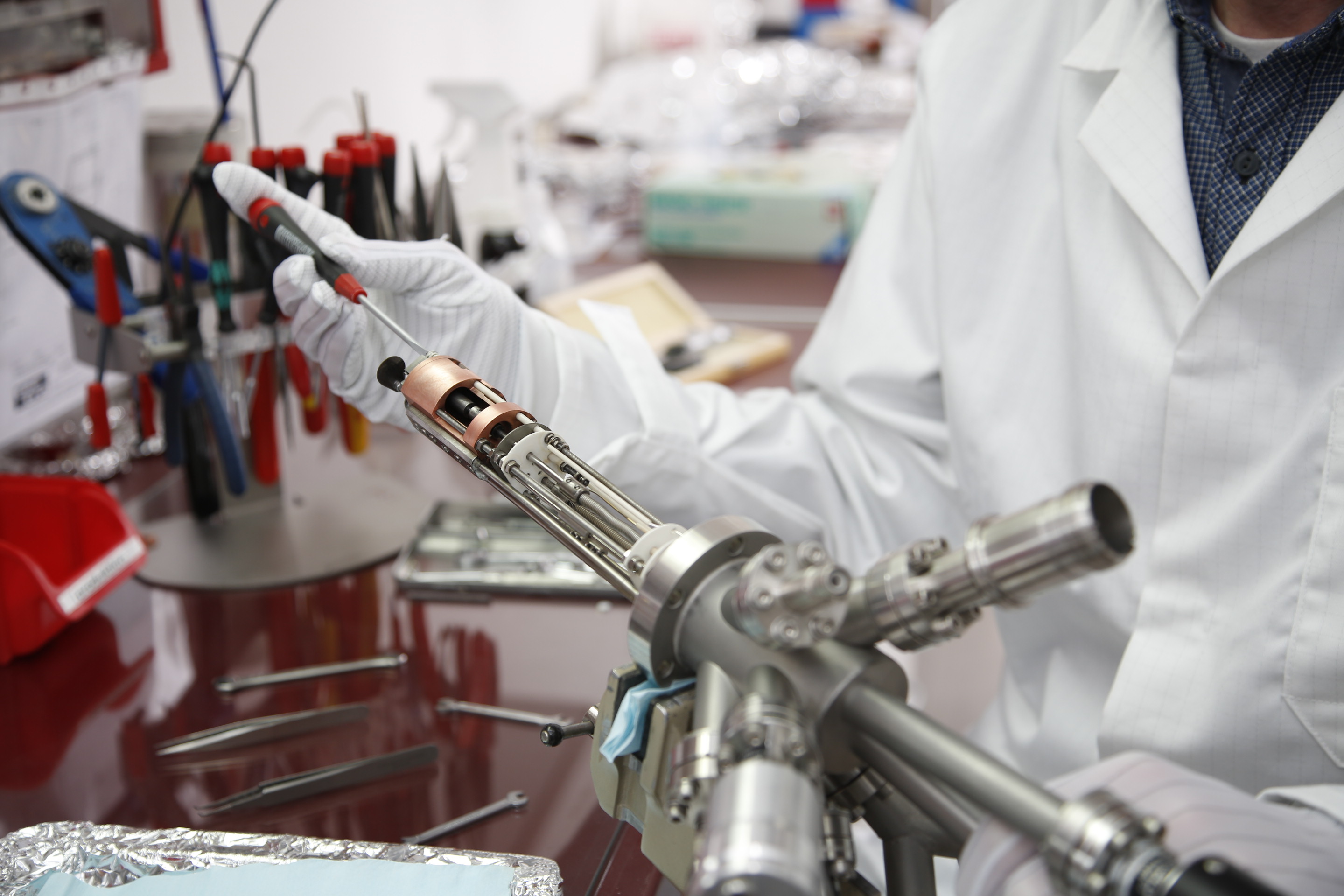H-flux Atomic Hydrogen Source* works by thermally dissociating hydrogen in an electron bombardment heated fine tungsten capillary (thermal hydrogen cracker). By bouncing along the hot walls the molecular hydrogen is cracked to atomic hydrogen. This is e.g. very useful for in-situ, damage free cleaning of residual oxygen prior to sample coating (MBE) or analysis. Other applications are in surface modifications appreciating the high reactivity of atomic species.
Atomic Hydrogen can be used in surface science and thin film technolgy ( MBE, GSMBE ) mainly for the following applications:
damage free in situ cleaning e.g GaAs, InP, Ge and Si. Removal of residual oxygen and carbon Low temperature cleaning Surfactant – improvement of layer properties during growth post growth surface treatment/improvement chemical passivation and surface reconstruction annealing of amorphous silicon
The H-flux Atomic Hydrogen Source is UHV compatible and mounted on a NW35CF (2.75″OD) flange, making the source an easy retrofit to existing vacuum systems.


